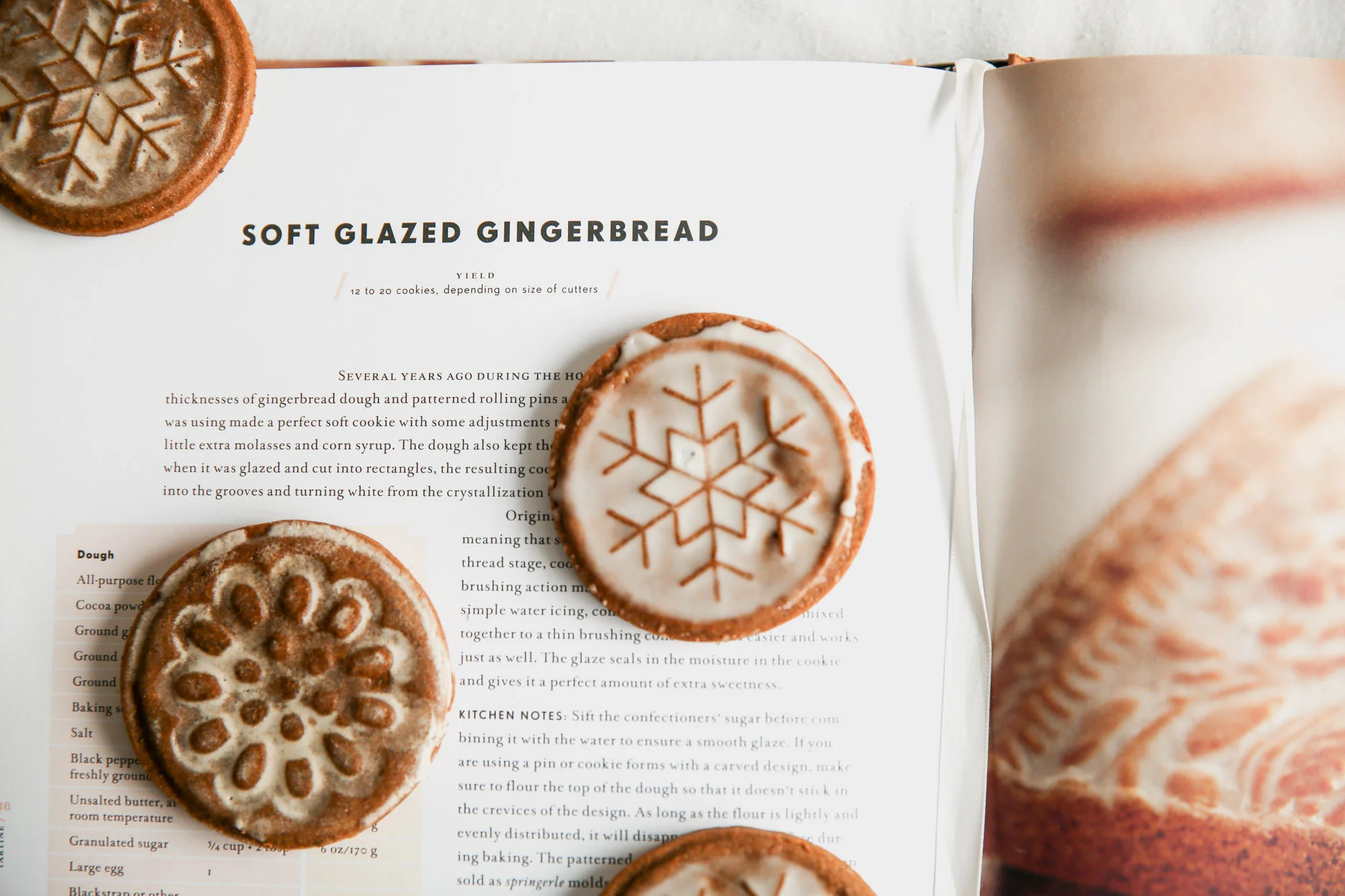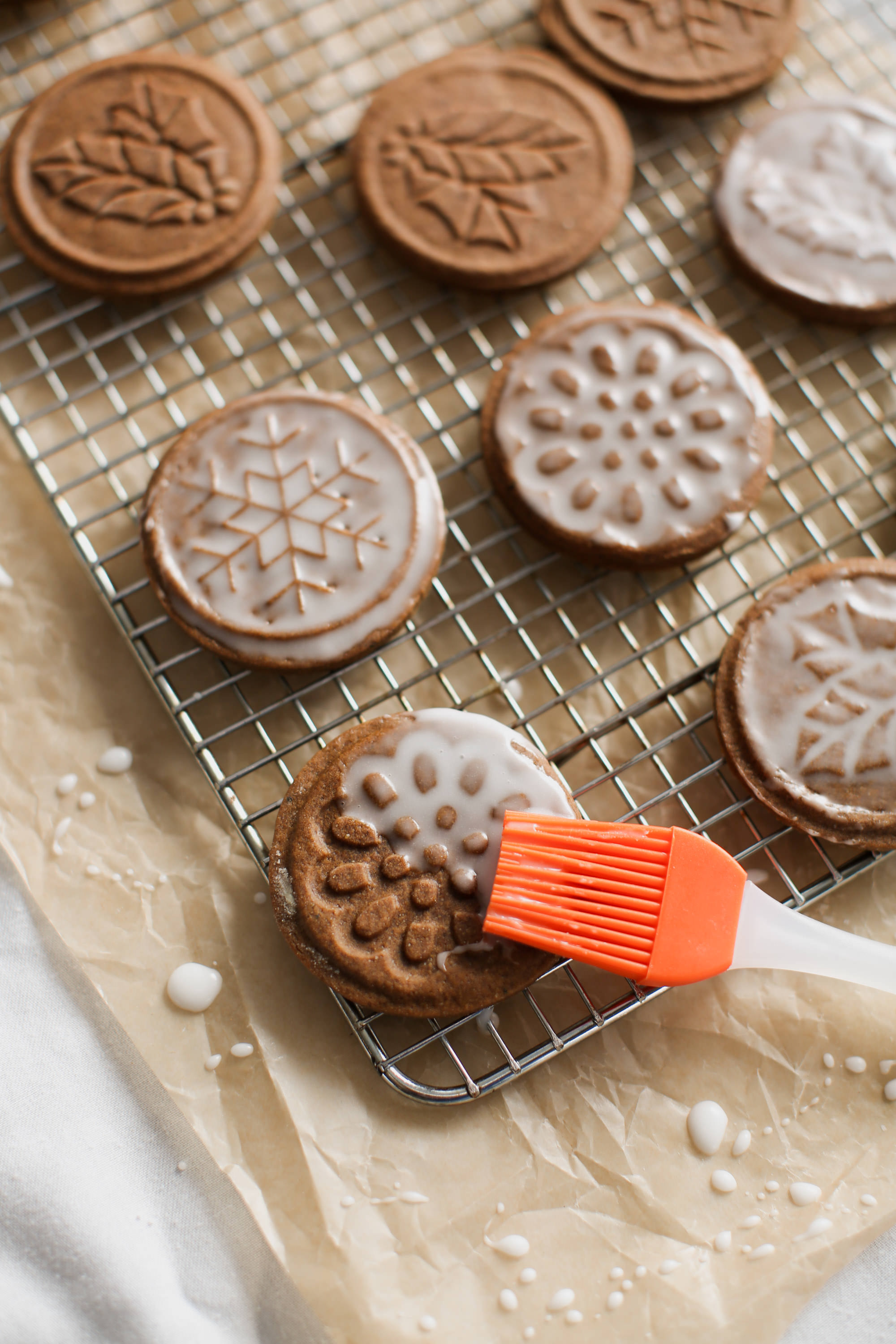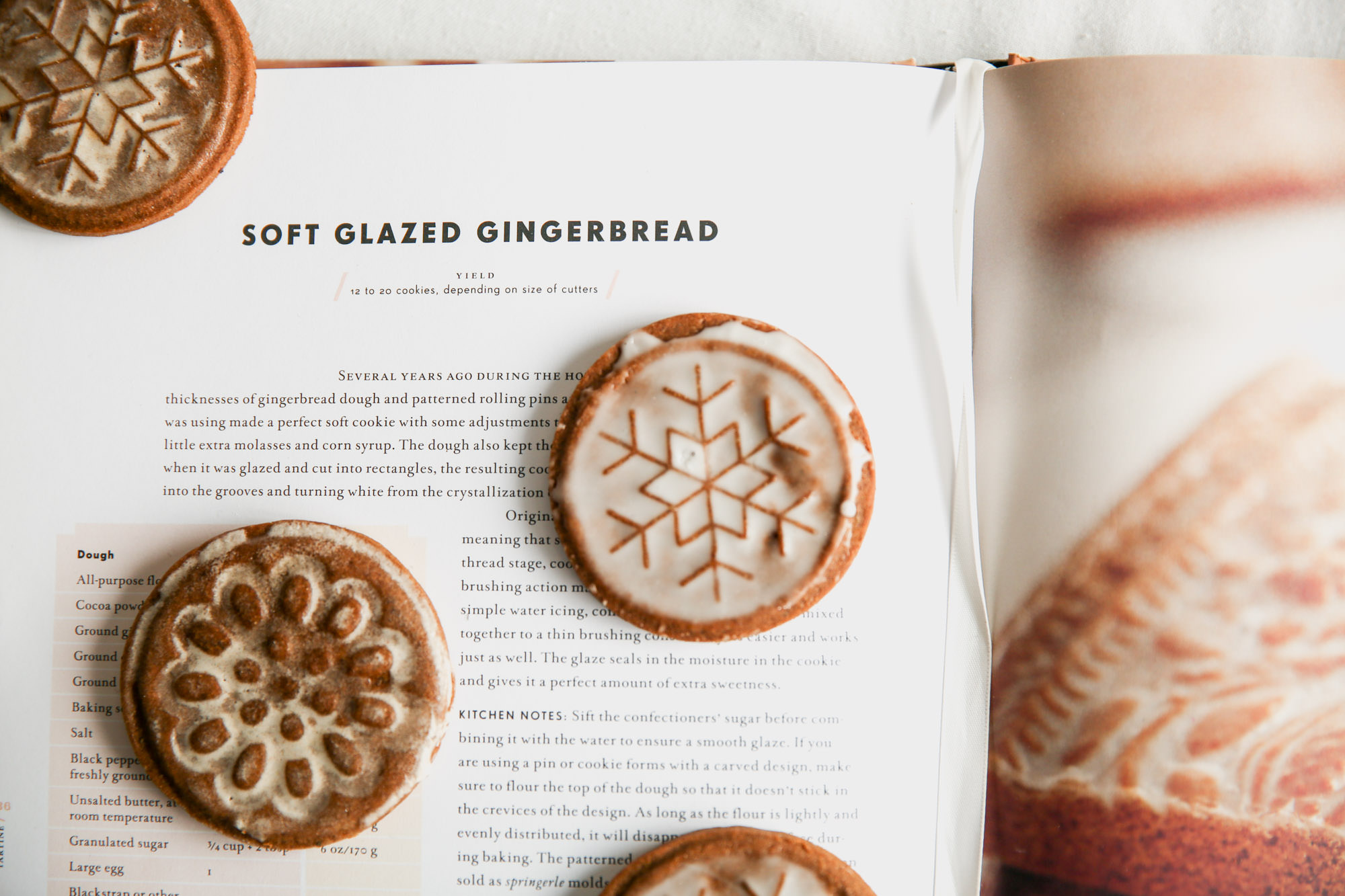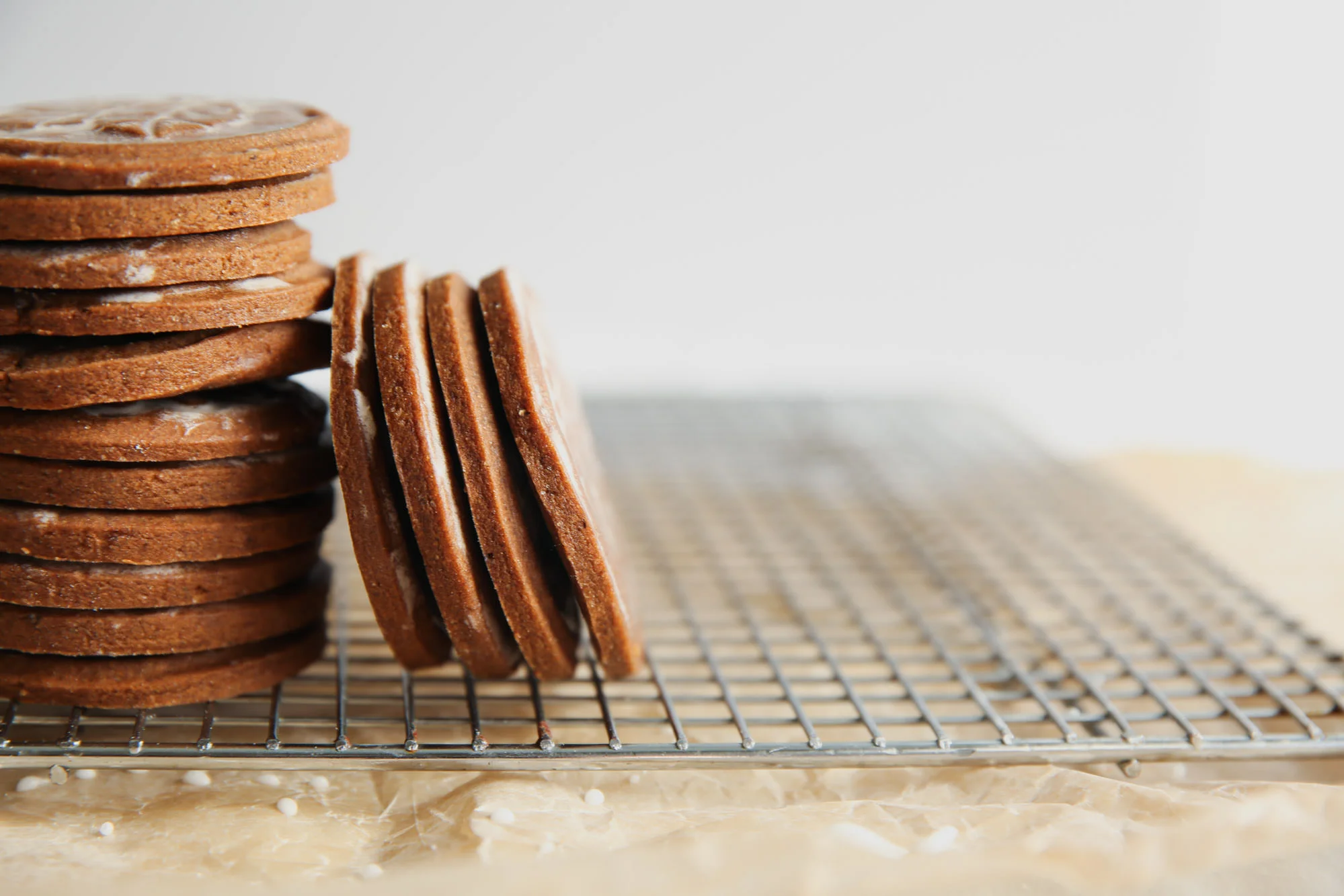
This is installment #11 in my endeavor to cook through the Tartine Pastry Book. Thanks for joining in and I hope you learn something.

Cookies are synonymous with Christmas, and there isn’t a flavor that gets me more in the holiday spirit than gingerbread.

Some like them chewy, and some like them with a bit of snap (both of which can be achieved with this recipe depending on your cooking time), but either way they should be rich in color, smell gingery, and have a sharp spicy flavor.
None of this mild gingerbread nonsense.

In my opinion, gingerbread should be spicy, and these are just the right amount of spice, with an ingredient you would never think to put in a cookie: pepper.
That’s right, pepper. The addition is perfection. Just make this recipe and you’ll see why.
This recipe checks all of the boxes for what a classic gingerbread cookie should be, and in the true spirit of the holidays, they’re best made in a big batch to give away as gifts.

Disclaimer, these cookies are a lil bit extra, but what about the holidays isn’t? That being said, they are definitely worth the effort, especially if you’re using them as holiday treats for coworkers, friends or family.

These cookies go the extra mile with a patterned top that can be achieved with a cookie stamp or rolling pin with the design etched in. With either method, as you press it into the surface of the dough, a design is left behind.

The designs that are imprinted into the gingerbread create the perfect surface for the icing to melt into all of the grooves, adding that extra bit of sweetness to compliment the spice of the cookie.

The Tartine method calls for using a decorative rolling pin, but I used a cookie stamp and cut out each cookie with a biscuit cutter slightly larger than the stamp. This method is a little bit more time consuming than rolling the pin over the dough and then cutting out rectangles, but it was what I had on hand and I really enjoyed the effect.

Not long after I made these, a friend got me a cookie decorating rolling pin, which I’ll definitely be trying out next year.

Here are a few tips before you get started
The Dough needs a lot of time to chill in the fridge, so making the dough the day before you plan to bake is a must in my book. It means way less stress on baking day.
While the recipe calls for chilling your dough and THEN rolling it out the next day, I found it much easier to roll it out to the desired thickness before resting it in the fridge. The dough becomes incredibly hard to work with once it is chilled.
Make sure you use PLENTY of flour when rolling out your dough to avoid sticking and tearing the dough.
To prepare the icing, Tartine just says to “whisk the sugar and water until smooth” but I found that sifting the sugar first to get rid of any clumps was a very necessary step. The last thing you want on your beautiful imprinted cookies is a clumpy icing.

Because it doesn’t get any better than gingerbread around the holidays.
Ingredients
For The Dough
3 3/4 cups all-purpose flour
1 tablespoon cocoa powder
4 teaspoons ground ginger
1 1/2 teaspoon ground cloves
2 teaspoons ground cinnamon
1/2 teaspoon baking soda
1 teaspoon salt
1 1/4 teaspoon freshly ground black pepper
1 cup unsalted butter, room temperature
3/4 cup + 2 tablespoons granulated sugar
1 large egg
1/2 cup blackstrap or dark molasses
2 tablespoons light corn syrup
For The Glaze
1 cup confectioner’s sugar
2 tablespoons warm water
Instructions
Stir together flour, cocoa, ginger, cloves, cinnamon, baking soda, salt and pepper into a medium bowl.
In a stand mixer with paddle attachment, beat butter on medium speed until creamy and fluffy. Slowly add sugar while mixer is running and continue to mix until smooth.
Scrape down the sides, add the egg, and mix on low until fully incorporated.
Add molasses and corn syrup and mix on medium until incorporated and scrape down the sides of the bowl.
Add in flour and mix on low until ingredients are well incorporated and a dough forms that starts to pull away from the sides of the bowl.
Remove dough, to a piece of lightly floured wax paper, place a large piece of wax paper on top, and then roll out to 1/8” thickness, and rest overnight in the fridge.
*Note: Tartine calls for 1/3” thickness but I found this to be too thick for my preferences.Preheat oven to 350 degree as line a baking sheet with parchment paper.
Remove the top wax paper from your dough, lightly flour the surface and roll your patterned rolling pin over the dough and cut into squares. Alternatively, you can imprint your cookies with a cookie stamp, cut them out with a biscuit cutter, and then re-work & roll out the dough and repeat the process to use all of your dough.
Bake until slightly darkened along the sides and still soft in the middle. For a chewy cooky, I recommend taking them out earlier because they continue to firm up after taking them out of the oven. For a crispy cookie, let them bake until the middle is starting to firm up. My 2.5” cookies took exactly 9 minutes to have the perfect chew to them. It will depend on the thickness of your dough and size of your cookie.
To make the glaze, sift your sugar into a bowl, add 2T of water and whisk until smooth.
Let cookies cool for about 5 minutes and while the are still warm brush a coating of the glaze on top of each cookie with a pastry brush. Let cool completely before serving.
Featured
Tartine Shortbread—Recipe Review
This shortbread recipe comes together in no time, is rich and buttery, with a crumbly melt in your mouth texture.
Tartine Chocolate Oatmeal Walnut Cookies—Recipe Review
These Chocolate Oatmeal Walnut Cookies from Tartine are the real deal. Soft, chewy, with plenty of texture and flavor. Use these 4 easy tips from the recipe to make any cookie the best cookie ever.
